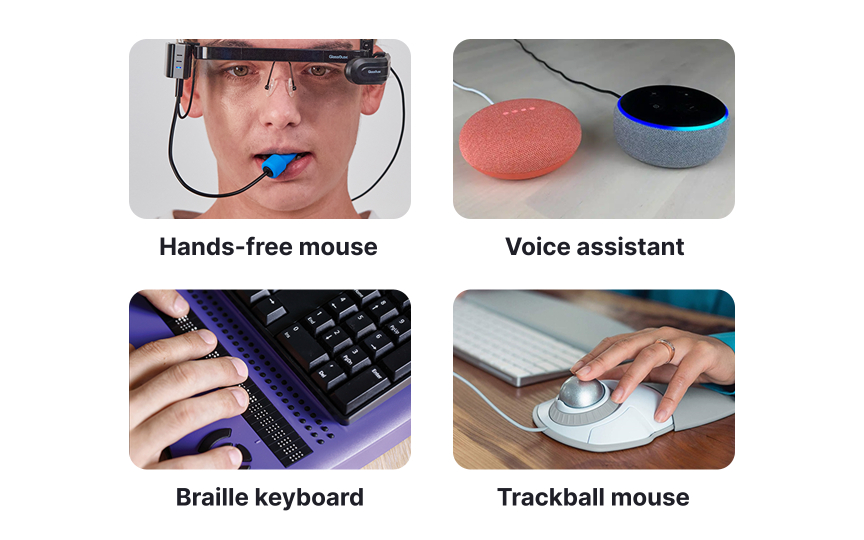Assistive technology basics
Assistive technologies transform how users with disabilities interact with government digital services. Screen readers, voice recognition software, and alternative input devices provide essential access points to online information and transactions.
Common assistive technologies in government service context include:
- Screen readers: NVDA, JAWS, and VoiceOver
- Voice recognition tools: Dragon NaturallySpeaking
- Alternative keyboards and switches
- Screen magnification software
- Refreshable braille displays
All assistive technologies rely on properly structured digital content. Well-implemented semantic HTML helps each tool understand and present information correctly. For example, screen readers announce headings and landmarks, voice recognition targets clickable elements, and magnification software maintains content relationships.[1]Government services must ensure compatibility across the full range of assistive technologies.

